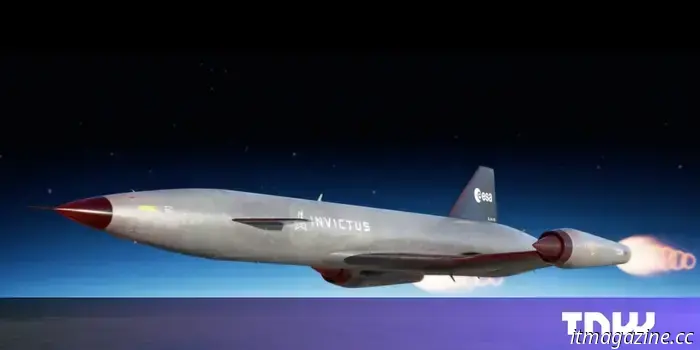
ESA's spaceplane initiative breathes new life into a defunct company's hypersonic engine.
Invictus, a new project supported by the European Space Agency (ESA), is reviving a bankrupt company’s propulsion system for hypersonic planes, with the goal of creating and flying a hydrogen-powered spaceplane by 2031.
The proposed engine is based on pre-cooler technology, which has been developed over many years by UK aerospace firm Reaction Engines, which went out of business in November.
Several leading engineers from Reaction Engines have joined British aerospace and defense firm Frazer-Nash Consultancy, which is now at the forefront of the Invictus consortium. Other collaborators include US aircraft manufacturer Spirit AeroSystems and Cranfield University in the UK.
The aim of Invictus is to create a reusable hypersonic vehicle capable of traveling at Mach 5 (6174 km/h) — five times the speed of sound. In contrast to most rockets, this spaceplane would take off horizontally from a runway. It would approach the edge of space before descending and landing like a commercial airplane. Powered by hydrogen, the aircraft promises reduced emissions and longer endurance compared to conventional jet fuel engines.
The first phase of the initiative, which is backed by €7 million from ESA’s General Support Technology Programme, plans to deliver a concept design by mid-2026. This design will focus on the hydrogen-fueled, air-breathing propulsion system of the aircraft.
The pre-cooler functions as a heat exchanger that cools the incoming air before it enters the engine. At hypersonic speeds, air entering the engine can heat up to thousands of degrees, which is too high for standard turbines. The pre-cooler quickly cools this air using cold hydrogen fuel that flows through small pipes.
This system is intended to mitigate the intense heat generated by shock and friction at hypersonic speeds, enabling safe engine operation. Ground tests conducted by Reaction Engines last year demonstrated promising results when this technology was integrated with jet engines.
Currently, Invictus remains a conceptual project, but in theory, spaceplanes could be a more economical means of reaching the edge of space compared to rockets. Their benefits include the ability to take off from a standard runway and be reused multiple times — similar to an airplane but with enhanced capabilities.
Sarah Wilkes, managing director at Frazer-Nash, is optimistic that the consortium can bring this concept to fruition. “With robust industry support and extensive engineering and aerospace expertise – including colleagues at Frazer-Nash with a decade of propulsion experience – we have all the essential elements to turn this ambitious vision into reality,” said Wilkes.
Other articles
 Norwegian investment company ventures into the AI boom in the frigid north.
Aker is the most recent company venturing to the far north to take advantage of plentiful green energy and natural cooling for energy-intensive data centres.
Norwegian investment company ventures into the AI boom in the frigid north.
Aker is the most recent company venturing to the far north to take advantage of plentiful green energy and natural cooling for energy-intensive data centres.
 How WeTransfer sparked concerns regarding the training of AI on user data.
WeTransfer users were worried that the company planned to use their data to train AI models. This situation highlighted increasing concerns regarding trust in AI.
How WeTransfer sparked concerns regarding the training of AI on user data.
WeTransfer users were worried that the company planned to use their data to train AI models. This situation highlighted increasing concerns regarding trust in AI.
 Reasons for requesting a pause on the AI Act from the perspective of a climate advocate.
Antoine Rostand, the president and co-founder of the environmental intelligence company Kayrros, is concerned that the AI Act may negatively impact sustainability initiatives.
Reasons for requesting a pause on the AI Act from the perspective of a climate advocate.
Antoine Rostand, the president and co-founder of the environmental intelligence company Kayrros, is concerned that the AI Act may negatively impact sustainability initiatives.
 This cargo vessel is converting its CO2 emissions into eco-friendly cement.
UK startup Seabound claims to have developed the world’s first commercial carbon capture system designed for cargo ships. This system is currently operational at sea.
This cargo vessel is converting its CO2 emissions into eco-friendly cement.
UK startup Seabound claims to have developed the world’s first commercial carbon capture system designed for cargo ships. This system is currently operational at sea.
ESA's spaceplane initiative breathes new life into a defunct company's hypersonic engine.
The ESA is supporting a new initiative named Invictus, which seeks to create and launch a hydrogen-fueled spaceplane by 2031.
